Discover the Majestic Beauty of South Wutai Scenic Area: A Hidden Gem in China
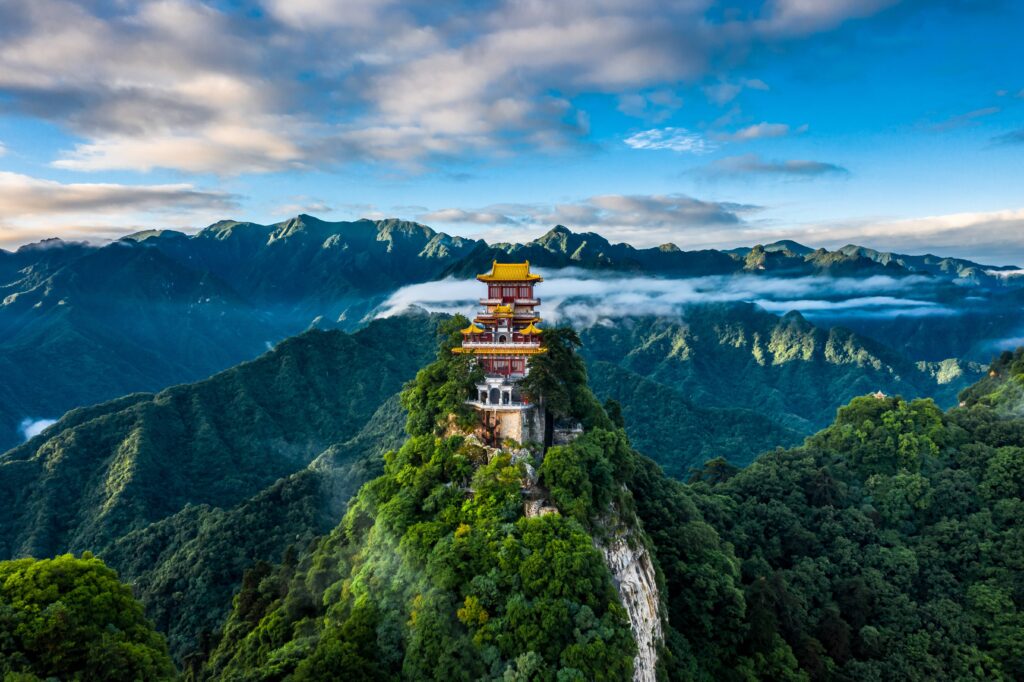
An Essential Guide to Visiting South Wutai Scenic Area
In This Guide
- An Essential Guide to Visiting South Wutai Scenic Area
- The Rich History and Legends of South Wutai Scenic Area
- Main Highlights: What You Absolutely Can’t Miss
- Planning Your Visit: A Practical Guide
- Tickets: Prices, Booking, and Tips
- How to Get There: A Complete Transportation Guide
- Local Cuisine and Accommodation Nearby
- Frequently Asked Questions
- Final Thoughts on Your Trip
Nestled in the serene embrace of the Zhongnan Mountains, the South Wutai Scenic Area (南五台景区) beckons travelers with its rich tapestry of history, spirituality, and breathtaking landscapes. Often overshadowed by its more famous counterparts, this enchanting destination offers a unique blend of Buddhist heritage and natural beauty, making it a must-visit for those seeking a deeper understanding of Chinese culture.
As one of China’s revered Buddhist sites, South Wutai has long been regarded as a sacred retreat, attracting pilgrims and curious travelers alike. The area is dotted with ancient temples, each telling a story that echoes the wisdom of the ages. Among these, the majestic Shengshou Temple stands out, its towering pagoda a reminder of the architectural prowess of the Sui Dynasty. The temple complex, along with numerous other shrines, forms a mosaic of spiritual devotion, inviting visitors to pause, reflect, and connect with the profound serenity that permeates the air.
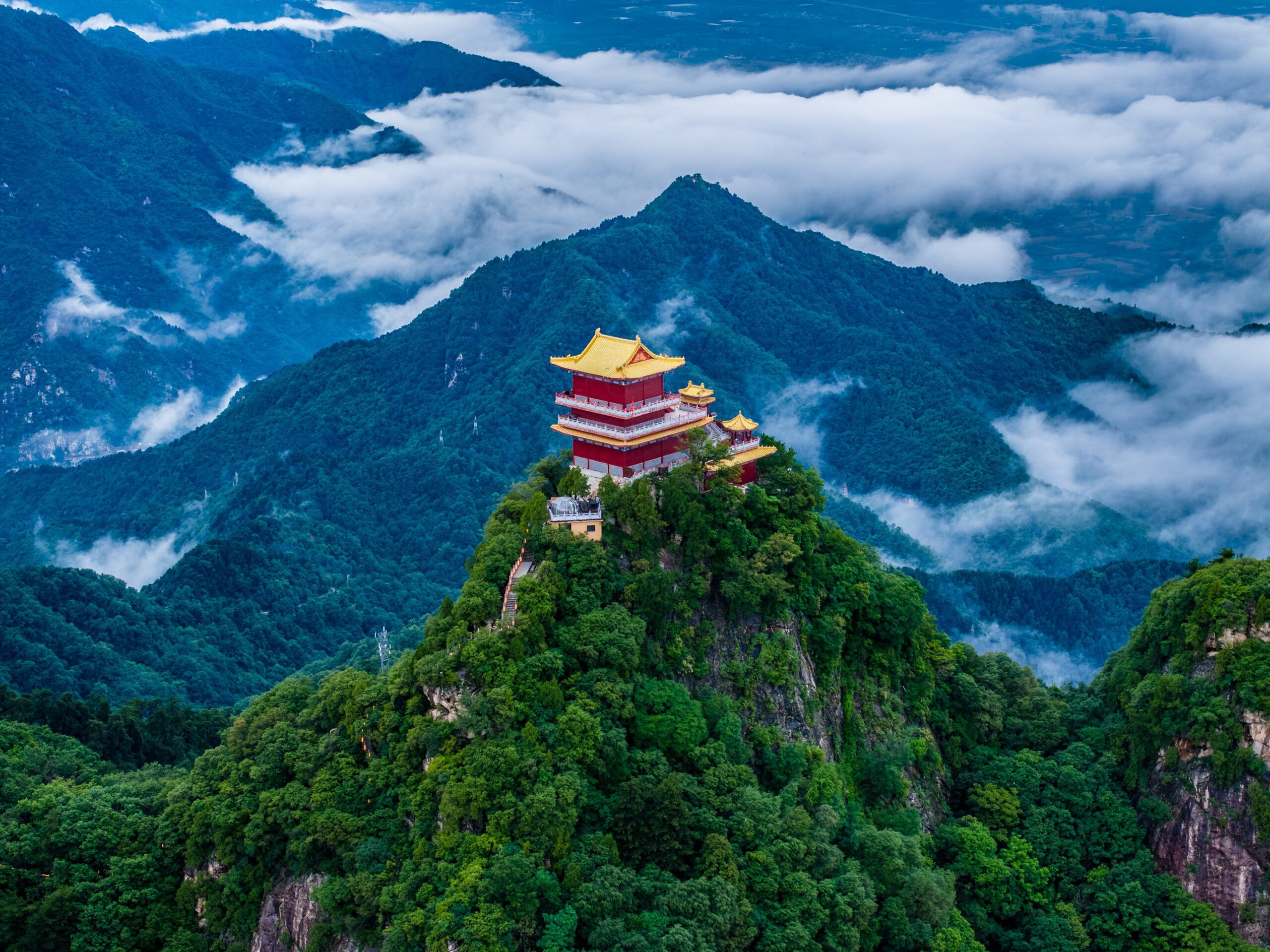
South_Wutai_Scenic_Area.
Whether you are an ardent Buddhist pilgrim or simply a traveler with an appreciation for history, the South Wutai Scenic Area offers an immersive experience that transcends time. Picture yourself wandering through lush forests, where nearly a thousand species of flora create a living tapestry of color and life. Marvel at the five peaks of South Wutai, their majestic silhouettes rising like guardians over the landscape, each one a distinct part of this sacred harmony.
In this guide, we will navigate the essential highlights of South Wutai, from its storied temples to the breathtaking natural vistas that await your discovery. Prepare to embark on a journey that promises not only visual splendor but also a profound connection to the spiritual heart of China.
The Rich History and Legends of South Wutai Scenic Area
Nestled in the breathtaking landscapes of the Zhongnan Mountains, the South Wutai Scenic Area (南五台景区) is a treasure trove of history and legend, where the echoes of ancient spirituality and natural beauty harmoniously coexist. Known as a significant Buddhist site, this area has long been a sanctuary for pilgrims and travelers seeking enlightenment and tranquility.
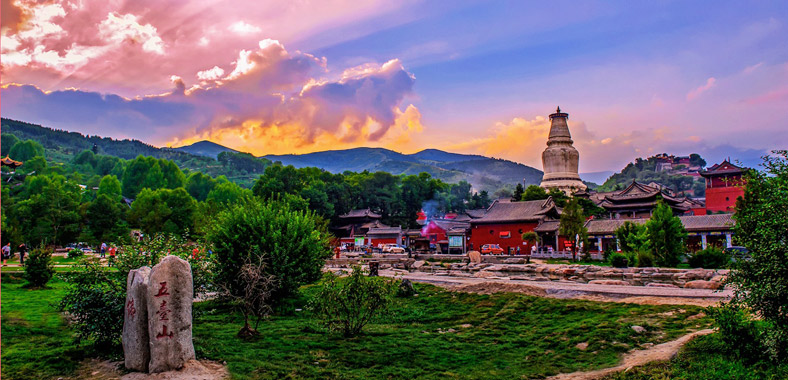
South_Wutai_Scenic_Area.
The Historical Significance of South Wutai
Historically, South Wutai has been revered as a sacred mountain, with its roots tracing back to the early dynasties of China. It was historically known as Taiyi Mountain, a name that reflects its esteemed status. By the Ming and Qing Dynasties, over 40 temples dotted the mountainside, showcasing the rich heritage of Buddhism in the region. Though many of these structures have succumbed to the ravages of time, several remain, including the majestic Shengshou Temple, which is famed for its intricate architecture and storied past.
Shengshou Temple, located on the northwest slope of South Wutai, is particularly notable. Built during the Sui Dynasty, its iconic pagoda, standing at 23 meters tall with seven tiers, is the oldest existing Buddhist pagoda in Xi’an. This pagoda, a model for future constructions, epitomizes the architectural evolution of Buddhist structures in China.
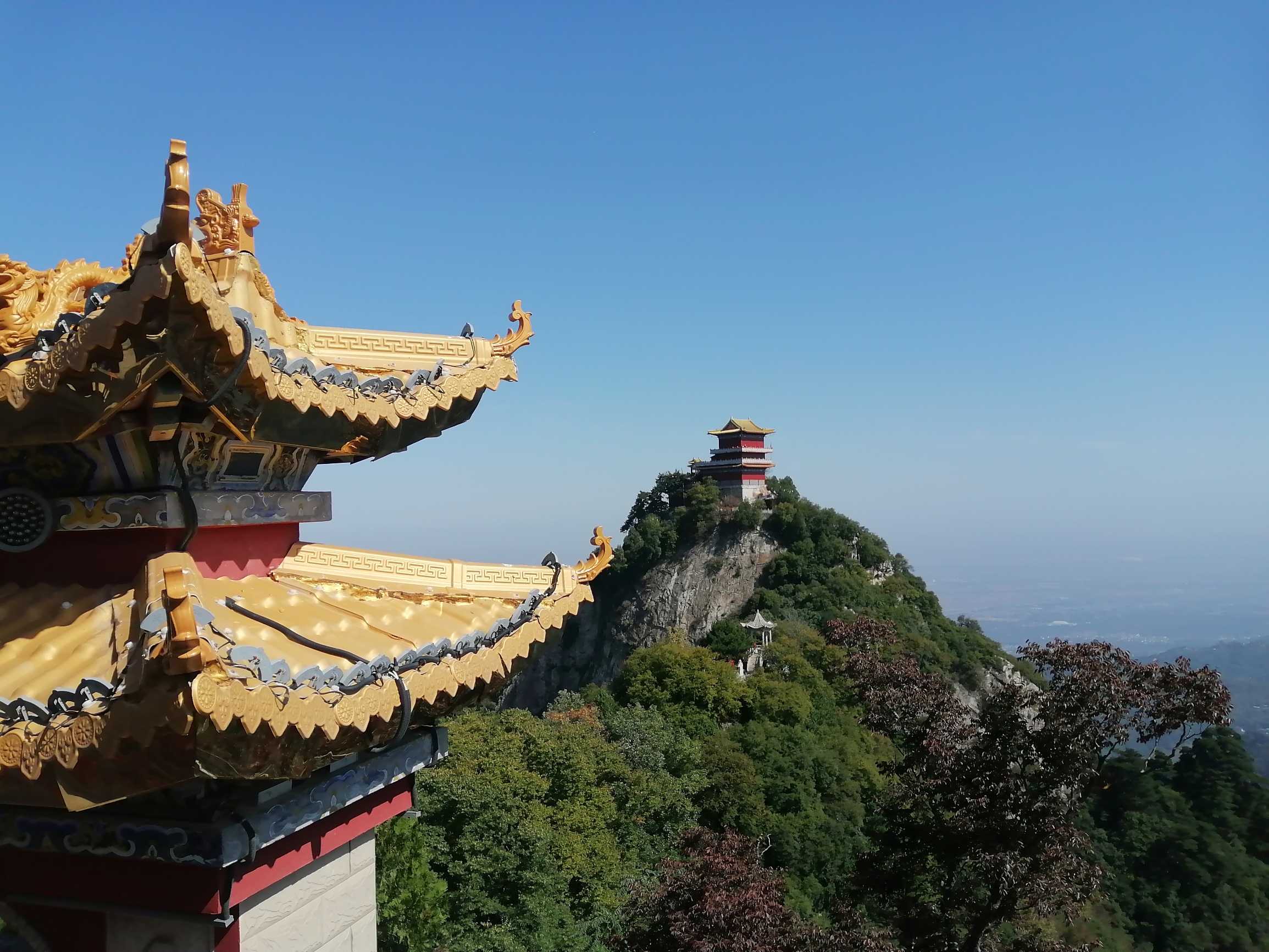
South_Wutai_Scenic_Area.
Legends of the Peaks
The five peaks of South Wutai—Qingliang, Wenzhu, Xianshen, Lingying, and Guanyin—are not just natural wonders; they are steeped in legend. These peaks, resembling a pen holder, have inspired countless stories and myths that enhance the mountain’s mystique. Among these tales, one of the most enchanting is that of Manjushri, the Bodhisattva of Wisdom, who is believed to have resided on the mountain. This connection to spiritual wisdom continues to draw pilgrims from far and wide, who come to seek guidance and clarity in their lives.
Another captivating legend involves the Guanyin Tower, named after the Goddess of Mercy, Guanyin. It is said that those who pray earnestly at this site will receive her blessings in times of need. The tower itself, standing tall against the backdrop of the mountains, serves as a beacon of hope and solace for many visitors.
The Natural and Cultural Landscape
The South Wutai Scenic Area is not just about its temples and legends; it is also a vibrant ecosystem. With nearly a thousand species of plants, including rare relict species, the area serves as a living botanical garden. Visitors can marvel at the diverse flora that flourishes amidst the dramatic geology of the region, often referred to as a “tectonic landform museum.” The scenic beauty is complemented by unique rock formations, such as the Rhinoceros Stone and Tiger Rock, each with its own story to tell.
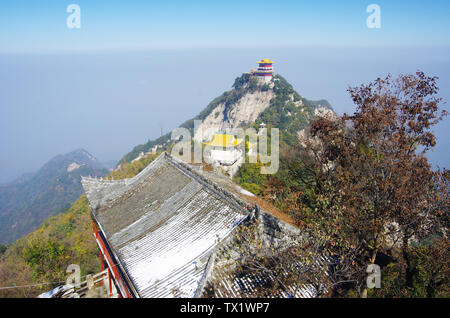
South_Wutai_Scenic_Area.
A Spiritual Journey
The journey through South Wutai is as much a spiritual pilgrimage as it is a physical one. As visitors traverse the winding paths and steep inclines, they engage with the land’s rich history, breathing in the air imbued with centuries of devotion. The temples, adorned with intricate carvings and vibrant colors, stand as testaments to the enduring faith of those who came before.
Pilgrims and travelers alike are encouraged to partake in the local customs, such as offering incense or engaging in meditative practices, to fully immerse themselves in the spiritual ambiance of the area. Each step taken on these sacred grounds brings one closer to the wisdom and peace that the mountain promises.
Conclusion
In summary, the South Wutai Scenic Area is a captivating blend of history, spirituality, and natural beauty. Its legends, steeped in the rich tapestry of Buddhist tradition, continue to inspire and attract those in search of enlightenment. Whether you are an ardent pilgrim or a curious traveler, the stories and sights of South Wutai invite you to explore a world where the past and present converge, creating a truly unforgettable experience.
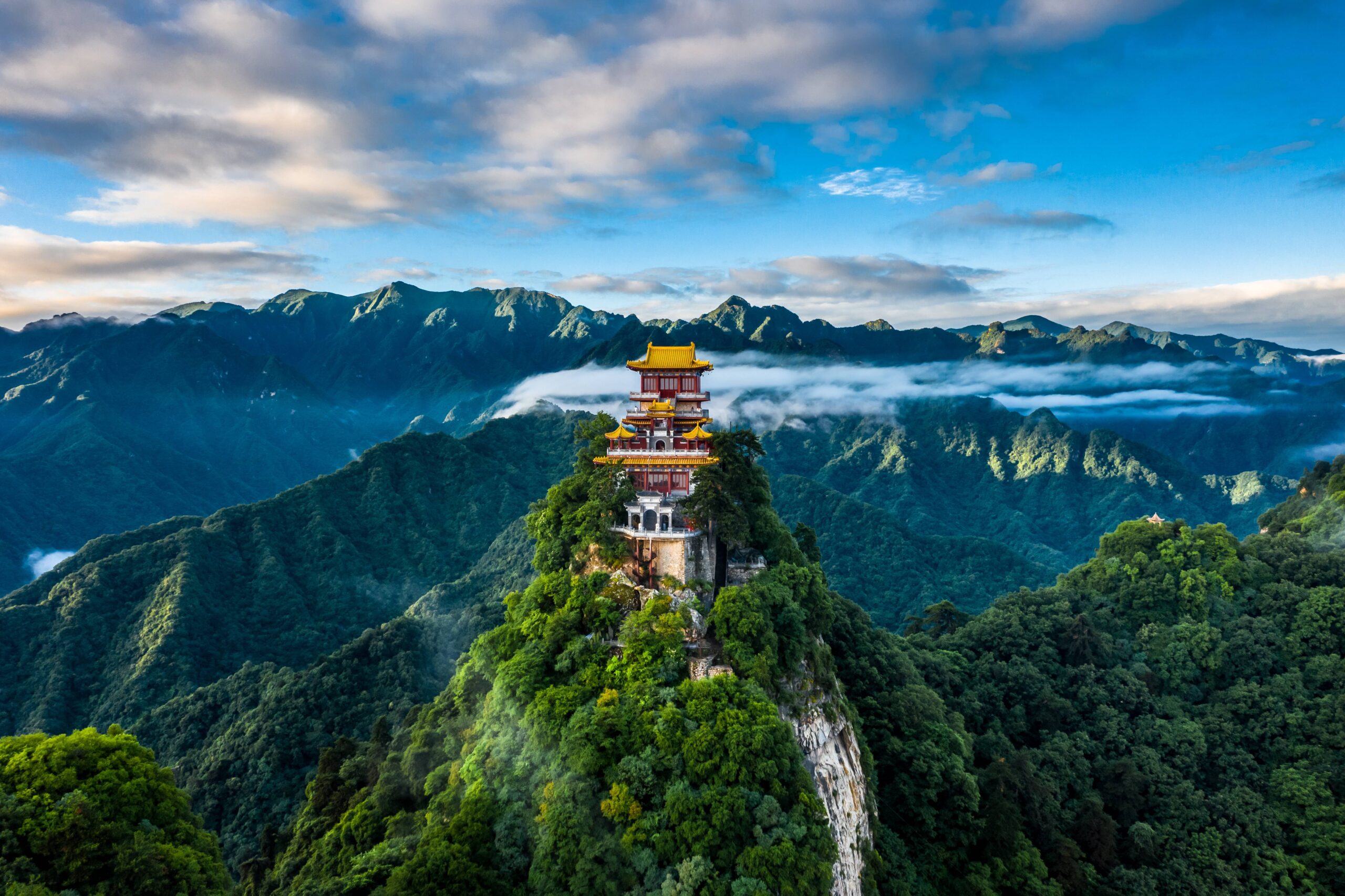
South_Wutai_Scenic_Area.
Main Highlights: What You Absolutely Can’t Miss
Discover the Wonders of South Wutai Scenic Area
Nestled in the heart of the Zhongnan Mountains, the South Wutai Scenic Area (南五台景区) is a treasure trove of natural beauty, rich history, and spiritual significance. This enchanting region is not just a feast for the eyes but a profound journey into the depths of Chinese culture and Buddhism. Here are the main highlights you absolutely can’t miss during your visit.
1. The Five Peaks of South Wutai
The South Wutai is defined by its five stunning peaks: Qingliang, Wenzhu, Xianshen, Lingying, and Guanyin. These peaks, said to resemble a traditional pen holder, create a picturesque landscape that has inspired poets and artists for centuries. Hiking along the trails that connect these peaks offers breathtaking views and a sense of serenity, making it a must for nature lovers and spiritual seekers alike.
2. Shengshou Temple (圣寿寺)
As one of the most significant Buddhist temples in the area, Shengshou Temple boasts a history that dates back to the Sui Dynasty. This impressive structure includes the Shengshou Temple Pagoda, a seven-story square pagoda standing at 23 meters, which is the oldest existing Buddhist pagoda in Xi’an. The temple complex is expansive and offers a peaceful retreat for contemplation and prayer.
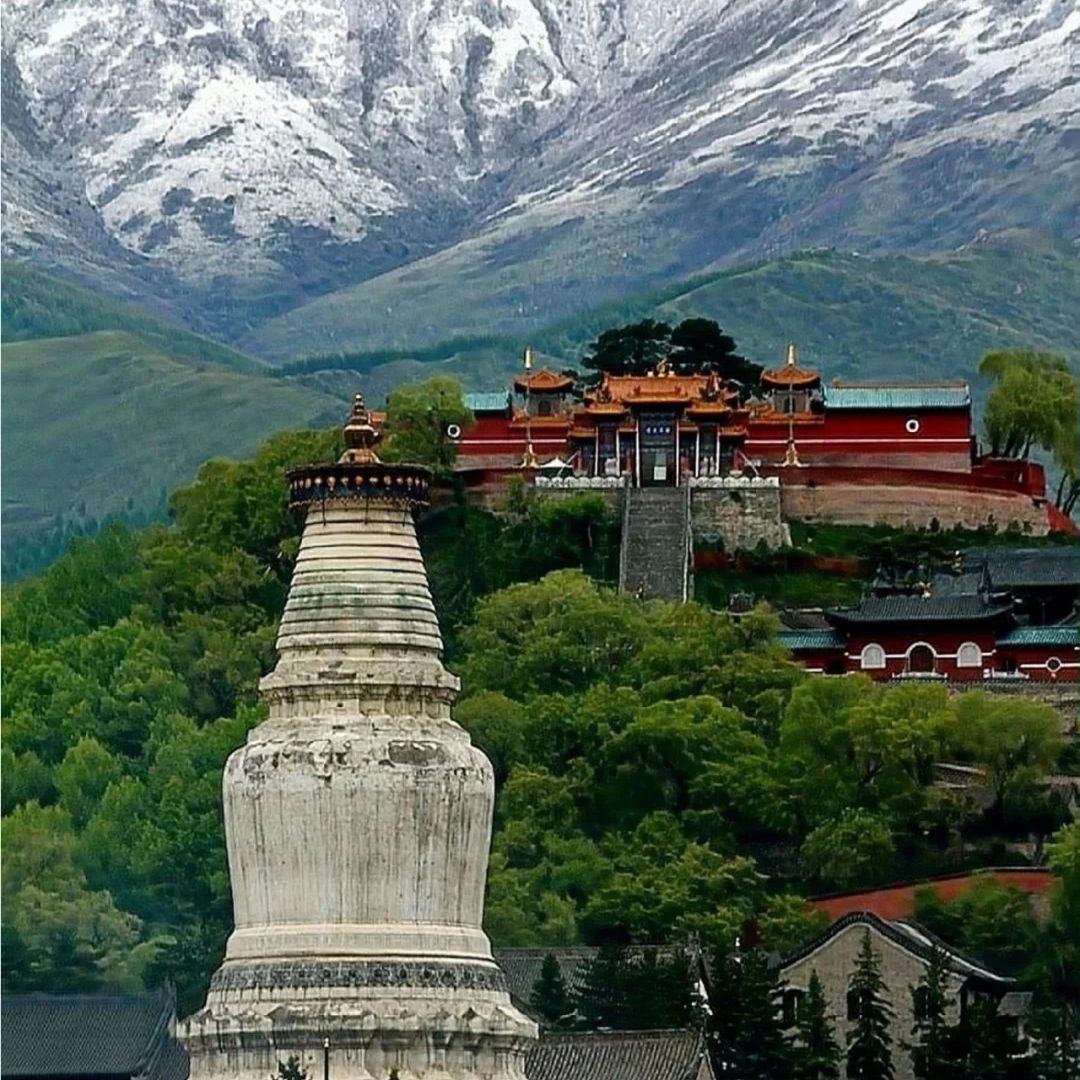
South_Wutai_Scenic_Area.
3. Guanyin Temple (观音寺)
Located on the western slope of South Wutai, Guanyin Temple is dedicated to the Bodhisattva of Compassion, Guanyin. Its serene atmosphere, adorned with intricate carvings and vibrant murals, provides a perfect backdrop for meditation. Visitors often light incense and offer prayers here, hoping for blessings in their lives.
4. The Scenic Trails
The South Wutai Scenic Area is renowned for its stunning natural landscapes, including lush forests and unique rock formations. Explore paths that lead you past the Complimentary Light Tower, the Rhinoceros Stone, and Tiger Rock—each formation tells a story that resonates with the natural and spiritual world. The area is also home to nearly a thousand plant species, including rare “living fossils,” making it a haven for botanists and nature enthusiasts.
5. Cultural Significance and Spiritual Heritage
The South Wutai has long been a pilgrimage site for Buddhists, with over 40 temples historically dotting the landscape. Although many of these have been lost to time, the existing temples such as Yuanguang Temple and Xilin Temple still reflect the architectural grandeur of the past. The area is imbued with a spiritual energy that resonates deeply with visitors, making it a perfect destination for those seeking enlightenment and cultural immersion.
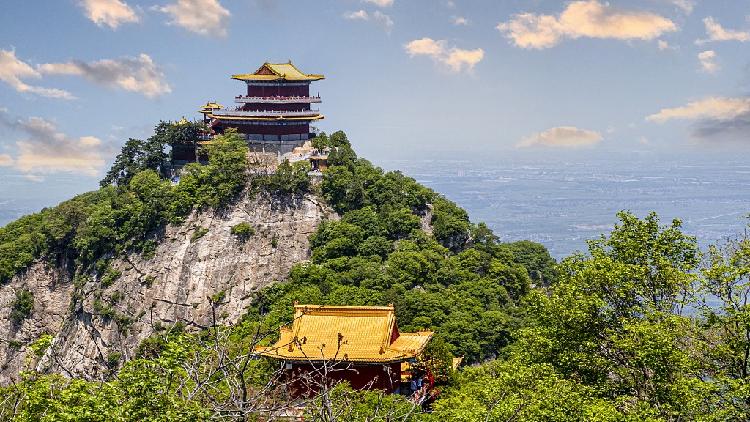
South_Wutai_Scenic_Area.
6. Stunning Views and Photo Opportunities
The panoramic views from various vantage points in South Wutai are nothing short of spectacular. Be sure to capture the sunrise from the East Terrace, which is renowned for its ethereal beauty. The sight of the sun rising above the clouds, illuminating the peaks, is an experience that will stay with you long after your visit.
7. Local Flora and Fauna
The diverse ecosystem in the South Wutai Scenic Area serves as a living museum of botany. From ancient trees to vibrant wildflowers, the region’s biodiversity is a sight to behold. Nature walks through the area will let you appreciate the intricate relationships within this ecosystem, perfect for those interested in natural history.
8. Practical Information
- Best Time to Visit: The ideal time to explore South Wutai is during spring and autumn when the weather is mild, and the scenery is at its most vibrant.
- Recommended Duration: Allocate at least half a day to fully appreciate the highlights of this scenic area. For a deeper exploration, consider spending a full day or more.
- Getting There: South Wutai is easily accessible from Xi’an, with various transportation options available including buses and private vehicles.

South_Wutai_Scenic_Area.
Conclusion
The South Wutai Scenic Area is a captivating blend of natural beauty, spiritual heritage, and historical significance. Whether you are a history buff, a nature lover, or a spiritual seeker, this area promises an unforgettable experience that connects you to the rich tapestry of Chinese culture. Don’t miss the chance to explore this extraordinary destination on your travels through China.
Planning Your Visit: A Practical Guide
Your Essential Guide to Visiting the South Wutai Scenic Area
Nestled within the tranquil embrace of the Zhongnan Mountains, the South Wutai Scenic Area (南五台景区) offers a unique blend of natural beauty and rich cultural heritage. Known for its historical temples and stunning landscapes, it is a must-visit destination for international travelers interested in Chinese history and Buddhism. Here’s everything you need to know to make the most of your visit.
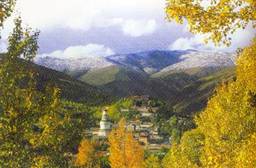
South_Wutai_Scenic_Area.
Getting There
- Location: Approximately 25 kilometers south of Chang’an District, Xi’an City, North of the Qinling Mountains.
- Transportation:
- By Car: Renting a car or hiring a private driver is the most convenient option, allowing you to explore at your own pace.
- Public Transportation: Buses run from Xi’an to the scenic area; check local listings for up-to-date schedules.
- Accessibility: The area is relatively easy to navigate, but be prepared for some steep paths if you plan to hike.
Opening Hours & Ticket Information
- Opening Hours: The scenic area generally operates from dawn until dusk, but specific temple hours may vary. Always check in advance for any updates or seasonal changes.
- Ticket Prices: Entrance fees are around RMB 135 (approximately USD 18) for adults. Prices may vary, so consider checking online or calling ahead for the latest information.
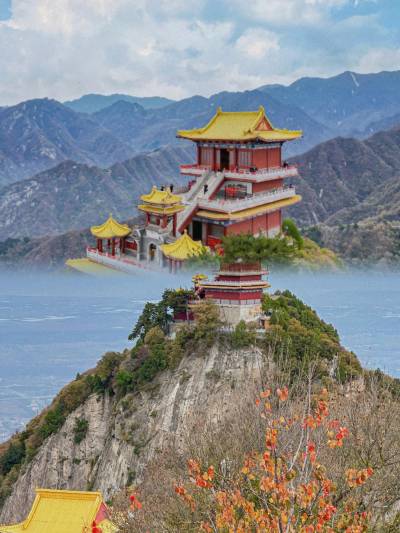
South_Wutai_Scenic_Area.
Recommended Duration of Visit
- Explore Time: Allocate at least half a day to a full day for your visit. This will give you ample time to visit the main temples, hike the trails, and appreciate the natural beauty.
Must-See Attractions
-
Shengshou Temple: A historical gem, this temple boasts a stunning pagoda built during the Sui Dynasty. It is the oldest surviving Buddhist pagoda in Xi’an, making it a must-see for history enthusiasts.
-
Guanyin Temple: Dedicated to Guanyin, the Goddess of Mercy, this temple is a serene spot for reflection and prayer.
-
Five Buddha Hall: This hall showcases exquisite architecture and is a sacred space for Buddhist worship.
-
Natural Scenery: The five peaks of South Wutai resemble a penholder, offering picturesque views and numerous hiking opportunities. Be sure to capture the breathtaking landscapes, which include waterfalls, unique rock formations, and lush flora.
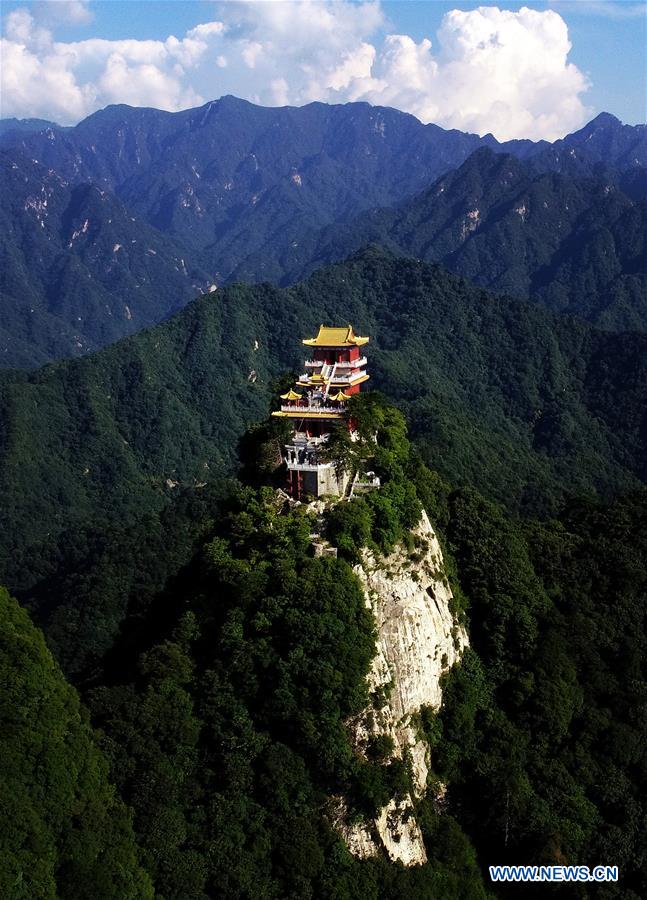
South_Wutai_Scenic_Area.
What to Bring
- Comfortable Footwear: With numerous trails and temple visits, sturdy hiking shoes are essential.
- Water and Snacks: Stay hydrated and energized, especially if you plan to hike.
- Camera: The area is incredibly photogenic, so don’t forget your camera or smartphone to capture the memorable sights.
- Cash: While some places may accept cards, cash is often preferred, especially in smaller shops and eateries.
Dining Options
- Local Cuisine: Sample local dishes at nearby restaurants, where you can find traditional Shaanxi flavors. Look out for dumplings and hand-pulled noodles.
- Pack a Picnic: If you prefer to eat in nature, consider bringing a picnic to enjoy amidst the stunning surroundings.
Accommodations Nearby
- Hotels and Guesthouses: There are various options for lodging in the area, ranging from budget hostels to mid-range hotels. Booking in advance is recommended, especially during peak travel seasons.
- Cultural Stays: Consider staying in a traditional guesthouse to immerse yourself in local culture and hospitality.

South_Wutai_Scenic_Area.
Cultural Etiquette
- Respectful Attire: When visiting temples, dress modestly. Long sleeves and pants are advisable.
- Photography: Always ask for permission before taking photos of people, especially monks or worshippers.
- Mindfulness: Maintain a respectful demeanor in sacred spaces, keeping noise to a minimum and observing any local customs.
Final Tips
- Plan Ahead: Research the temples and trails you wish to visit to optimize your time.
- Weather Considerations: Check the weather forecast before your visit, as conditions can change rapidly in mountainous regions.
- Stay Informed: For the latest updates on ticket prices, opening hours, and any special events, consider checking local tourism websites or contacting visitor information centers.
Visiting the South Wutai Scenic Area promises a journey through time, culture, and natural beauty. Prepare well, respect the local customs, and you’re sure to have an unforgettable experience.
Tickets: Prices, Booking, and Tips
Visiting the South Wutai Scenic Area is an enriching experience that immerses travelers in the profound history and breathtaking beauty of this legendary Buddhist site. To help you navigate the ticketing process and maximize your visit, here’s everything you need to know about ticket prices, booking options, and tips for a seamless experience.
Ticket Prices
As of 2025, the entry ticket for the South Wutai Scenic Area is RMB 135 (approximately USD 18). This ticket grants you access to the main attractions, including several historic temples and the stunning natural landscapes surrounding the area. Please note that certain activities, such as climbing some of the five main peaks, may require additional fees.
Booking Tickets
You can conveniently book your tickets in advance through various platforms, including popular travel websites like Trip.com. Booking online not only secures your entry but also helps you avoid long queues at the ticket counter, allowing you to start your exploration right away.
Important Contact Information:
– For ticket inquiries, you can reach out at +86-4009949234. This can be helpful if you have specific questions or need assistance with your booking.
Tips for Your Visit
- Plan Your Visit Duration:
-
Allocate 0.5 to 1 day for a thorough exploration of the South Wutai Scenic Area. This will give you ample time to visit the temples, enjoy the natural beauty, and perhaps even embark on a short hike.
-
Best Time to Visit:
-
The scenic area is open year-round, but visiting during the spring (April to June) and autumn (September to October) provides the most pleasant weather and stunning scenery, thanks to the blooming flowers and vibrant foliage.
-
Dress Appropriately:
-
Given the mountainous terrain, wear comfortable clothing and sturdy shoes suitable for walking and hiking. A light jacket may be beneficial, as temperatures can drop in the higher altitudes.
-
Respect Local Customs:
-
As a site of spiritual significance, be mindful of local customs and practices, especially when visiting temples. Dress modestly and be respectful of worshippers.
-
Consider Guided Tours:
-
If you prefer a more structured experience, consider joining a guided tour. This can provide deeper insights into the cultural and historical significance of the sites you visit, enhancing your understanding of the region.
-
Explore Nearby Attractions:
-
Take advantage of your visit by exploring nearby attractions such as Shengshou Temple, Nanwutai Forest Park, and Tusita Platform. These sites complement the rich experience of South Wutai and offer additional cultural perspectives.
-
Hydration and Snacks:
- Bring water and light snacks, especially if you plan to hike or spend extended time exploring. There are limited food options within the scenic area.
By following these tips and preparing ahead, your visit to the South Wutai Scenic Area will be not just a journey through stunning landscapes but also a profound encounter with the rich tapestry of Chinese history and Buddhist culture. Happy travels!
How to Get There: A Complete Transportation Guide
Reaching the South Wutai Scenic Area: Your Transportation Guide
Nestled in the majestic Zhongnan Mountains, the South Wutai Scenic Area (南五台景区) is a treasure trove of natural beauty and cultural heritage. For international travelers eager to explore this serene Buddhist retreat, understanding how to navigate the transportation options is essential. Here’s a comprehensive guide to help you reach this enchanting destination.
Getting to South Wutai
1. Arriving in Xi’an:
The closest major city to South Wutai is Xi’an, renowned for its historical significance and the famous Terracotta Army. Most international travelers will start their journey here.
- By Air:
-
Xi’an Xianyang International Airport (XIY) serves numerous international and domestic flights. Upon arrival, you can take a taxi or book an airport shuttle to the city center, which is approximately 40 kilometers away.
-
By Train:
- Xi’an Railway Station is well-connected to many cities in China. High-speed trains from Beijing, Shanghai, and Chengdu arrive frequently. Once in Xi’an, you can easily find taxis or public transport to your next destination.
2. From Xi’an to South Wutai:
The South Wutai Scenic Area is located about 25 kilometers south of Xi’an in the Chang’an District. Here are the best ways to make the journey:
- Taxi or Ride-Hailing Services:
-
The most convenient option is to take a taxi or a ride-hailing service (like Didi). The ride will take approximately 40-50 minutes, depending on traffic. This option offers flexibility and comfort, especially if you are traveling with luggage.
-
Public Bus:
-
For a more budget-friendly option, you can take a public bus from Xi’an to the scenic area. Buses heading toward the South Wutai Scenic Area can be found at Xi’an’s Long-distance Bus Station. The journey may take about an hour; ensure to check the schedules in advance.
-
Private Tours:
- Several tour operators in Xi’an offer day trips to South Wutai, often including transportation, a guide, and entrance fees. This is a great option if you prefer a structured experience and insights into the area’s rich history.
Exploring the Scenic Area
Once you arrive at the South Wutai Scenic Area, navigating the site is relatively straightforward:
-
Walking: The scenic area is designed for exploration on foot. Major attractions, such as the Shengshou Temple and the various peaks, are accessible via well-marked trails. Ensure you wear comfortable shoes as some paths can be steep.
-
Local Transport:
- In some areas, you may find local shuttle services or electric carts that can be hired for short distances, particularly if you have mobility concerns or wish to conserve energy for hiking.
Tips for a Smooth Journey
-
Language: While many signs are in both Chinese and English, it’s beneficial to have your destination written in Chinese for taxi drivers or bus personnel.
-
Timing: To avoid crowds and enjoy a peaceful experience, consider visiting during weekdays or early in the morning.
-
Weather Considerations: Check the weather forecast before your visit, as conditions can change rapidly in mountainous areas. Dress in layers and be prepared for cooler temperatures, especially at higher elevations.
By following this transportation guide, you’ll be well-prepared to embark on an unforgettable journey to the South Wutai Scenic Area. Embrace the spiritual atmosphere and stunning natural landscapes that await you at this remarkable destination!
Local Cuisine and Accommodation Nearby
Discovering Local Flavors and Comfortable Stays Near South Wutai Scenic Area
The South Wutai Scenic Area, nestled within the majestic Zhongnan Mountains, is not only a feast for the eyes with its stunning landscapes and ancient temples but also a treasure trove of local cuisine and charming accommodations. As you explore this sacred region, savor the authentic flavors of traditional Chinese dishes and find a comfortable place to rest your weary feet.
Culinary Delights
-
Noodle Dishes
One cannot visit this region without indulging in the local noodle specialties. Look for biangbiang noodles (扁扁面), renowned for their wide, hand-pulled texture. Served with a robust chili oil and garlic sauce, they are a warming dish perfect after a day of exploration. -
Dumplings (Jiaozi)
Dumplings are a staple in northern Chinese cuisine. Try steamed or boiled jiaozi filled with pork and cabbage, often accompanied by a tangy soy-vinegar dip. These dumplings are especially popular among locals and make for a hearty meal that’s both satisfying and culturally significant. -
Lamb Skewers
Given the region’s proximity to pastoral areas, grilled lamb skewers are a must-try. Marinated with aromatic spices and grilled to perfection, they offer a smoky flavor that is irresistible. Enjoy these alongside a cold drink as you soak in the local ambiance. -
Vegetarian Dishes
In keeping with the area’s Buddhist heritage, there are a variety of vegetarian options available. Stir-fried seasonal vegetables or tofu dishes prepared with local herbs and spices are both flavorful and nourishing, making them a great choice for health-conscious travelers. -
Local Snacks
Don’t miss out on trying Guokui (锅盔), a type of flaky, savory pancake stuffed with various fillings. It’s a popular snack among hikers and makes for a great quick bite during your adventures.
Accommodation Options
Finding a suitable place to stay is essential for a rewarding experience in the South Wutai Scenic Area. Here are some recommended accommodations that blend comfort with cultural richness:
-
Zhongnan Mountain Resort
Located near the base of the mountain, this resort offers cozy lodgings with stunning views of the surrounding peaks. Guests can enjoy amenities such as a spa and traditional Chinese meals in-house, making it an ideal retreat after a day of temple visits. -
Wutai Mountain Guesthouse
This humble yet welcoming guesthouse is perfect for travelers seeking a more authentic experience. Run by a local family, it provides simple rooms and home-cooked meals, allowing guests to connect with local culture and hospitality. -
Chang’an Hotel
Situated a short drive from the scenic area, this hotel offers modern comforts with traditional decor. Its restaurant serves a variety of local dishes, and the staff can assist with travel arrangements for nearby attractions. -
Buddhist Temples with Accommodation
Some temples in the area offer lodging for pilgrims and visitors. Staying at a temple not only provides a peaceful environment for reflection but also allows you to immerse yourself in the spiritual atmosphere of the region. -
Eco-Lodges
For eco-conscious travelers, consider staying at an eco-lodge that emphasizes sustainability and natural living. These lodges often provide organic meals and are set amidst nature, enhancing your connection to the breathtaking landscapes.
Final Thoughts
As you plan your visit to the South Wutai Scenic Area, indulge in the local culinary delights that reflect the rich history and culture of this remarkable region. With a range of accommodations available, you can find the perfect place to recharge after a day filled with exploration and spiritual discovery. Enjoy every moment of your journey through this enchanting corner of China!
Frequently Asked Questions
Frequently Asked Questions About South Wutai Scenic Area
1. What is the location of the South Wutai Scenic Area?
The South Wutai Scenic Area is situated in the Zhongnan Mountains, approximately 25 kilometers south of Chang’an District in Xi’an City, Shaanxi Province. It lies near the northern slopes of the Qinling Mountains, which adds to its scenic beauty.
2. What are the main attractions within South Wutai?
Visitors to South Wutai can explore several significant sites, including:
– Shengshou Temple: Known for its historical significance and the oldest existing Buddhist pagoda in Xi’an.
– Guanyin Temple: A tranquil spot dedicated to the Goddess of Mercy.
– Five Buddha Hall: A site of spiritual importance and stunning architecture.
– Nanwutai Forest Park: A beautiful area for hiking and enjoying nature.
3. How much does it cost to visit South Wutai?
As of 2025, the ticket price for the South Wutai Scenic Area is approximately RMB 135 (around USD 18). This fee grants you access to the main attractions within the area, though climbing some peaks may require separate tickets.
4. What is the recommended time to visit South Wutai?
It is advisable to allocate 0.5 to 1 day for a visit, especially if you wish to explore the temples and enjoy the natural scenery. For those interested in hiking or in-depth exploration, consider spending longer to fully appreciate the area.
5. Are there dining options available at South Wutai?
While dining facilities may be limited within the scenic area itself, visitors can find local restaurants and eateries in nearby towns. It is recommended to try local Shaanxi dishes, such as biangbiang noodles and roujiamo (a type of meat sandwich).
6. What is the best time of year to visit South Wutai?
The ideal time to visit South Wutai is during the spring (April to June) and autumn (September to November) months, when the weather is mild and the scenery is at its most vibrant. The summer can be hot, while winters may bring snow, offering a different but equally beautiful experience.
7. Is South Wutai suitable for families and children?
Yes, South Wutai is family-friendly, with various activities suitable for children. The scenic views, hiking trails, and cultural experiences provide an engaging environment for families to explore together. However, some hiking trails may require adult supervision for younger children.
8. How do I get to South Wutai from Xi’an?
To reach the South Wutai Scenic Area from Xi’an, visitors can take a taxi or arrange for a private car service. Public transport options may be available, but they can be less convenient. It is advisable to check local transport schedules or consult with your hotel for the best options.
Final Thoughts on Your Trip
As you prepare to conclude your journey through the breathtaking South Wutai Scenic Area, it’s essential to reflect on the rich tapestry of history, spirituality, and nature that you have encountered. This majestic region, steeped in Buddhist tradition and cultural heritage, offers an unparalleled experience that resonates deeply with both the mind and soul.
Embrace the Spiritual Essence
Visiting South Wutai is not just a visual feast; it’s an opportunity for spiritual connection. The temples, each with its unique architecture and sacred significance, invite you to pause and reflect. From the historic Shengshou Temple, with its ancient pagoda whispering tales of devotion, to the serene landscapes cradling the five peaks, every moment spent here enriches the spirit.
Relish the Natural Beauty
The natural beauty surrounding the Zhongnan Mountains is nothing short of spectacular. The picturesque views of the five peaks, each resembling a graceful brush holder, evoke a sense of tranquility that can only be found in nature. Whether you are wandering along the winding paths or simply basking in the soothing sounds of flowing waterfalls, the area serves as a reminder of our connection to the earth.
Connect with Local Culture
Take the time to engage with the local culture, whether through tasting authentic cuisine or conversing with friendly locals who share stories of their ancestors and the legends tied to this sacred land. These interactions will leave you with cherished memories and a deeper understanding of the region’s significance.
A Journey of Discovery
As you prepare to depart, remember that your journey does not end here. The South Wutai Scenic Area serves as a gateway to a broader understanding of Chinese history and culture. Its rich legacy and breathtaking landscapes will always call you back, inviting exploration, reflection, and inspiration.
In closing, may your experiences in South Wutai ignite a newfound appreciation for the beauty and spirituality that permeate this extraordinary corner of China. Let the memories linger in your heart, guiding you toward new adventures and deeper connections in your travels ahead. Safe travels!